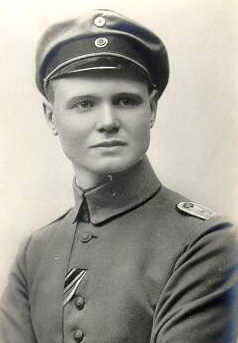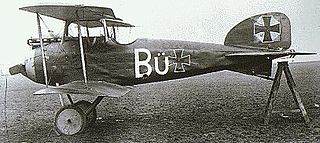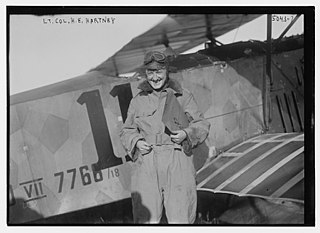Related Research Articles

Charles Eugène Jules Marie Nungesser was a French ace pilot and adventurer. Nungesser was a renowned ace in France, ranking third highest in the country with 43 air combat victories during World War I.

Karl Emil Schäfer was a German pilot during World War I; he became one of the major German flying aces of the war, with 30 confirmed aerial victories.
William Ernest Shields DFC & Bar was a Canadian First World War flying ace, officially credited with 24 victories.
Captain Carleton Main Clement was a Canadian First World War flying ace officially credited with 14 victories despite being handicapped by flying an obsolete plane.

Jasta 2 was one of the best-known German Luftstreitkräfte Squadrons in World War I. Its first commanding officer was the great aerial tactician Oswald Boelcke, and it was the incubator of several notable aviation careers.

Air Vice Marshal George Roberts Howsam, CB, MC was a Canadian First World War flying ace, officially credited with 13 victories. Serving in the newly formed Royal Canadian Air Force in the inter-war years, Howsam served as the RCAF's Director of Training during World War II.
Captain Ronald McNeill Keirstead DSC was a Canadian First World War flying ace, officially credited with 13 victories.
Friedrich Altemeier was a German World War I flying ace credited with 21 confirmed aerial victories. Due to his distinguished faithful military service and piloting skills, he became one of the test pilots for Germany's last and best fighter airplane of the war, the Fokker D.VIII.

Leutnant Otto Paul Wilhelm Höhne was a German World War I flying ace credited with six confirmed aerial victories. Höhne was a pioneer ace; he was the first pilot to score a victory while flying the Albatros D.1. During World War II he was a recipient of the Knight's Cross of the Iron Cross.

Captain Stanley Cockerell AFC was a British World War I flying ace credited with seven aerial victories. He later became a test pilot for Vickers and attempted the first flight from Cairo to Cape Town.

Harold Evans Hartney was a Canadian-born World War I flying ace who served in the Royal Flying Corps and then in the United States Army Air Service, credited with seven confirmed and one unconfirmed aerial victories.

Captain-Commandant Fernand Maximillian Leon Jacquet was a World War I flying ace credited with seven aerial victories. He was the first Belgian pilot to score an aerial victory, on 17 April 1915, and became the first Belgian ace on 1 February 1917. He was also the first Belgian pilot to fly the Belgian king Albert I to the front, in 1917. Additionally, he was the only Belgian honored by the British with a Distinguished Flying Cross.
Captain Horace Dale Barton was a World War I flying ace credited with 19 aerial victories.
Leutnant Ludwig Hanstein HOH, Bavaria's MMO was a World War I flying ace credited with 16 aerial victories.
LeutnantPaul Strähle was a German World War I flying ace credited with 15 aerial victories.
Lieutenant Cecil Roy Richards was an Australian flying ace of World War I. He was credited with twelve aerial victories.
Captain Edwin Louis Benbow was an English flying ace during the First World War, credited with eight victories, comprising six destroyed and one shared destroyed, and one 'out of control'. He was the only pilot to gain 'ace' status flying the Royal Aircraft Factory F.E.8 exclusively.
Captain Lancelot Lytton Richardson was an Australian flying ace during World War I. He was credited with seven confirmed aerial victories before his death in action on 13 April 1917.
Captain James Henry Forman DFC was a World War I Canadian flying ace credited with nine aerial victories. He was personally decorated by his king for his valor. After leaving military service in the 1920s, he would return to service in World War II.
Merrill Samuel Taylor was a Canadian flying ace of the First World War. He was credited with seven aerial victories while flying a Sopwith Camel fighter for the Royal Naval Air Service and, later, the Royal Air Force. He touched off the air battle that resulted in the death of the war's leading ace, Manfred von Richthofen, on 21 April 1918. On 2 May 1918, he killed German ace Hans Weiss for his fifth victory. Taylor was killed in action by Franz Büchner on 7 July 1918.
References
- Pusher Aces of World War 1 Jon Guttman, Harry Dempsey. Osprey Pub Co, 2009. ISBN 1-84603-417-5, ISBN 978-1-84603-417-6.